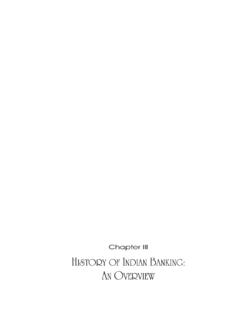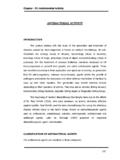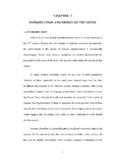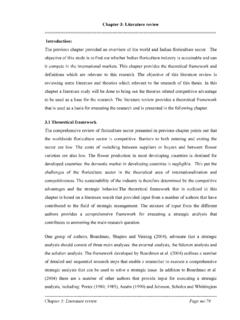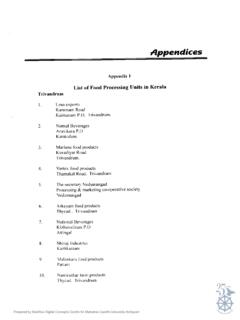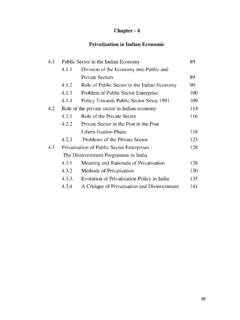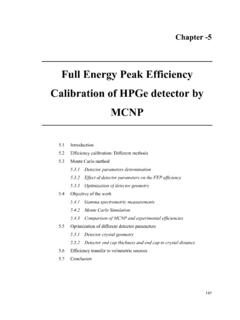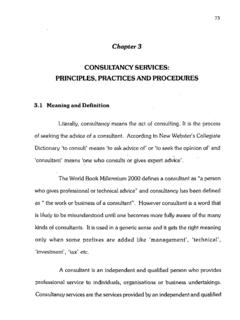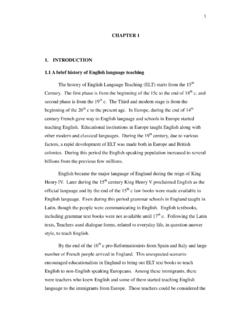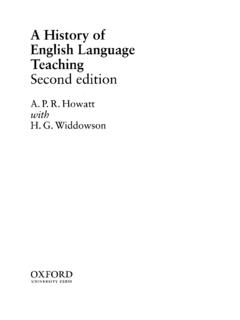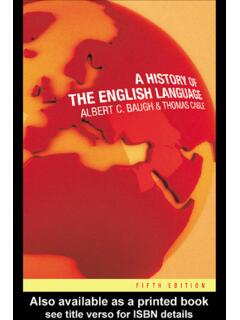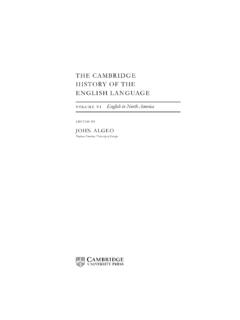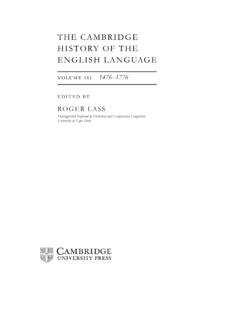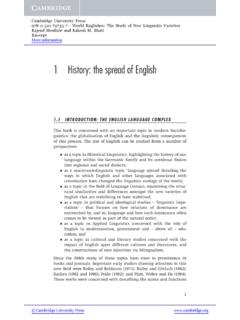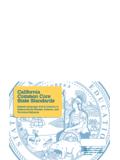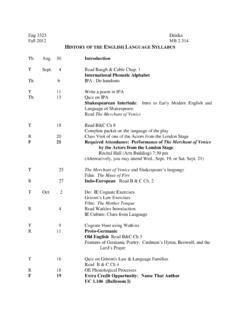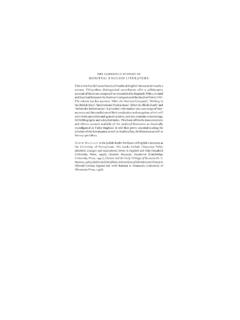Transcription of History of English Language Teaching - Shodhganga
1 History of English Language TeachingAnne Mary K. Manavalan Comprehension and communication in English :a perspective of its problems in the undergraduate classes of English , University of Calicut, 2002 Chapter 1 History of English Language Teaching The Early Years The weakening of the dominance of Latin and French and the emergence of the Vernacular due to a series of political and social changes gradually led England to be a monolin~ial nation. This, in its wake, initiated the Teaching of modern Vernacular languages at the end of the middle ages.
2 This transition brought about such an idueutial change in the status of the native tongue that it was now necessary for the children to construe their Latin lessons in English instead of French, which hitherto had been an open sesame to the classical languages. This trend was strengthened at the end of the 14& century by the contributions of Chaucer, who traditionally represents the waxing mood of Enghsh self confidence. The earliest extant Manual for the Teaching of French, written before the end of Richard IPd's reign and a number of similar manuals which appeared during the 15' and early 16~ century, were the fore runners of the Language Teaching text books of the Tudor period.
3 Even the uswpation of the throne fiom Richard I1 by the House of Lancaster in 1939 illustrated the break from the past. The order dethroning Richard was read in Enghsh, and Henry IV used Enghsh in claiming the throne and in his acceptance speech. Tlus tradition was carried on by his son Henry V. By the end of the 15& century even the statutes of the State were written in Enghsh, and the affairs of the state handled through the royal secretariat were conducted in the Vernacular. To the Tudors, Enghsh was the Language of the nation, spoken by all, from the king himself downwards.
4 Knowledge of French became a sign of prestige and was considered an accomplishment for anyone aspiring high positions. Knowledge of Latin was considered as a sign of properly educated man or woman. Going to school meant learning Latin grammar and in fact, Latin was the only Language with a grammar. French was on the way to acquire one, but English had to wait until the beginning of the next century before any serious attempt was made for a proper scholarly description of the Language . In the absence of a grammar, the early Language Teaching material relied mainly on texts and the dialogue form.
5 The use of dialogues was a long established tradition in the Teaching of spoken Latin in the Middle-Ages. The Latin tea with a translation in Anglo-Saxon, consists of questions and answers relating to topics of everyday life. The importance of commerce in the early stages of modem Language Teaching is emphasized so much so that the first manual of French dialogues named maniere de lanme was obviously written for merchants and traders. The first textbooks designed solely to teach Enghsh appeared in the late 16~ century after the arrival of large numbers of French Huguenot remes in the 1570s and 1580s.
6 Double manuals in the maniere tradition aiming to teach Enghsh to French speakers7 as well as the other way round, started to appear at the end of the 15' century. The customers of these manuals may have included merchants using French as a linrma fianca as well as native French speakers. It is also likely that they realized the truth that knowledge of your client's mother tongue will work wonders in business. The first of these double manuals was a short book of dialogues and other texts prepared by William Caxton in 1483. Caxton7s assistant, in his printing press, produced another double-manual on similar lines called A Lytell treatyse for to learne Endisshe and Frensshe (1498).
7 The text is laid out in alternating lines of English and French. There were other signs of growing interest in learning Enghsh in the early 16~ century. Enghsh began to be included along with more widely known languages in the Polyglot dictionaries and phrase books, which were a device for acquiring 'survival knowledge' of foreign languages in Renaissance times. The earliest listed is a seven- Language dictionary of 1540. It was followed by many others. Double-manuals originating in the continent are perhaps a better guide to the demand for Enghsh than those produced in England.
8 An early example is by a Frenchman, who can claim to be the first teacher of English as a foreign Language . Meurier's double-manual was called A Treatise for to learn to speak French and Endish, published in 1553. The last example of early handbooks for the Teaching of Enghsh to foreigners before the advent of the Huguenot refugees was a small manual called A verv profitable Book To learn the manner of Readinn, Writing and Speaking English and Spanish (1554). The development of Enghsh Language Teaching after these humble beginnings was determined by the political, religious events of late sixteenth century.
9 Refhgee Language Teachers in Elizabethan London From about 1560 onwards, as catholic reaction to the Reformation, Counter Reformation power started in the Low Countries, especially in Flanders. Many young and enterprising Flemings arrived in large numbers in fiiendly neighboring countries including England, as they chose exile to submission. They were later joined by their French CO-religionists, to whom Queen Elizabeth made welcome for the skills and conscientious attitudes they brought with them. The Massacre in Paris in 1572 caused still another flow of Protestants from France to the countries of the reformed church.
10 The French Huguenot and other protestant refugees from Flanders, Italy and even Spain were mainly craftsmen, though some had a more intellectual middle class background, among them teachers also. Jacques Bellot, Claudius Holyband and John Florio are the three refugee teachers who represent a cross-section of the Language Teaching commud~ of the time. A striking feature of these refugee teachers is that they were native speakers of the languages they taught, and continued the traditional bilingual method of the earlier manuals. They were able to see their own Language with the eyes of those attempting to learn it and felt the need for reliable linguistic descriptions, from which models, examples and explanations can be drawn.
